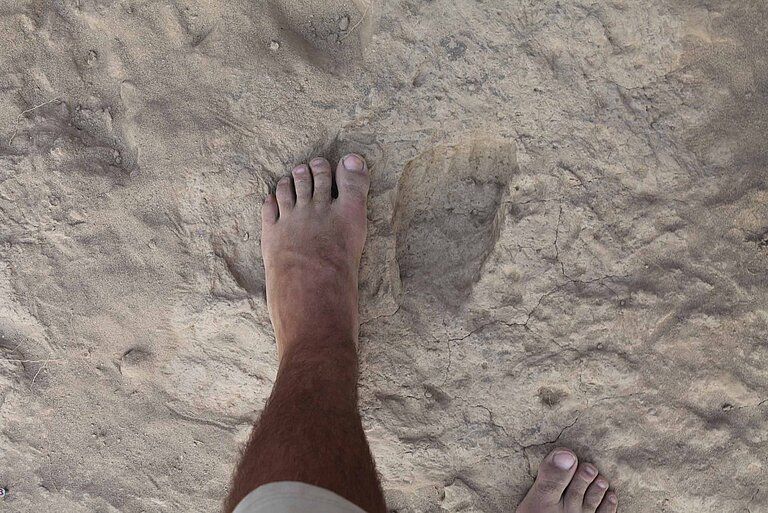1.5-million-year-old footprints provide window to the life of Homo erectus
Fossil bones and stone tools can tell us a lot about human evolution, but certain dynamic behaviours of our fossil ancestors – things like how they moved and how individuals interacted with one another – are incredibly difficult to deduce from these traditional forms of paleoanthropological data. Researchers from the Max Planck Institute for Evolutionary Anthropology in Leipzig, along with an international team of collaborators, have recently discovered multiple assemblages of Homo erectus footprints in northern Kenya that provide unique opportunities to understand locomotor patterns and group structure through a form of data that directly records these dynamic behaviours. Using novel analytical techniques, they have demonstrated that these H. erectus footprints preserve evidence of a modern human style of walking and a group structure that is consistent with human-like social behaviours.
